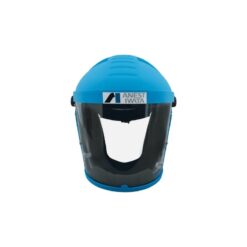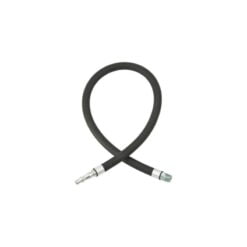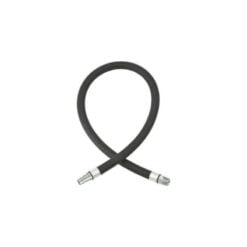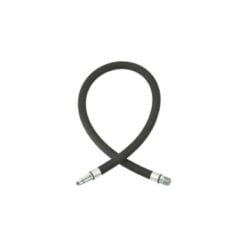In this guide to air compressor safety, we look at everything you need to stay safe when using an air compressor.
Firstly, we’re sure you know about the benefits of working with compressed air (if you didn’t, here’s a quick list):
- Low maintenance costs
- Energy efficient
- Low weight to power ratio
- Increases productivity with quick and easy connection
- Works for long periods of time without overheating
- Has the ability to complete a big range of different tasks
But what about the dangers? Are there any? What should you be aware of?
Are Air Compressors Dangerous?
Lots of people fear the dangers of compressed air, and yes, whilst there are dangers, using compressed air is no more dangerous than using electricity. However, using compressed air incorrectly (as with electricity) can lead to serious injury. That’s why we have put together this air compressor safety guide – become aware of how to protect yourself, others and your equipment.
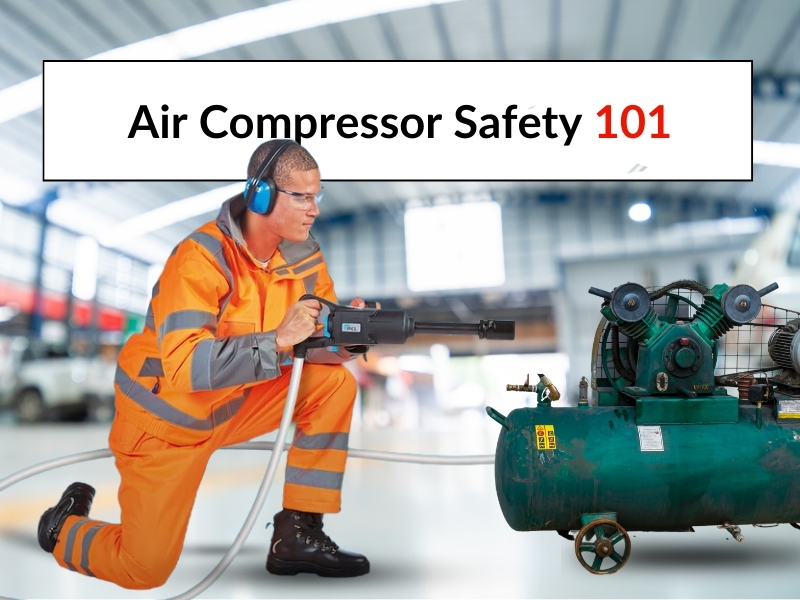
Safety First: Before Using your Compressor
Before you start using your air compressor, give it a check over to make sure there are no obvious signs of damage or wear. Furthermore, you should check your air hoses for any tears or holes before using them.
For a deeper look into air compressor maintenance, please head to our guide: Air Compressor Maintenance Made Easy.
Keep Air Couplings Tight
Additionally, your air couplings should be checked for signs of wear before use. Not only that, but when connecting to a compressor you should check that the hose adaptor is a correct match to the coupling type. Where required the threads are leak sealed using PTFE Tape or Loctite 577.
Avoid These Mistakes with Compressed Air:
- Although we know you never would, never ever blow air from an air compressor hose into your mouth! This can rupture your lungs and stomach.
- Never use compressed air to clean dirt or dust from your body or clothing! That’s a severe injury waiting to happen!
- Do NOT remove the belt guard from an air compressor unless the compressor is switched off (and you know what you’re doing!).
- Don’t carry your air tools by the air hose, this can damage the hose and tool.
- If you drop a tool, always inspect it for damage before using it.
- Always ensure people around you are aware of you using an air compressor to avoid tripping accidents and injury.
Air Compressor Safety Equipment
When using compressed air, it’s important that you use the right PPE equipment to keep you safe. Firstly, safety gloves are essential for avoiding burns and other injuries.
Secondly, safety ear muffs to protect you from the loud noise an air compressor can produce if using a more powerful model. In fact, some compressors are so loud they could potentially cause hearing loss! It’s also advisable that you wear a pair of protective safety goggles.
If you are working with spray equipment, or indeed working with dangerous dusts, vapours or gases then a full face breathing mask is essential.
Compressor Safety when Cleaning
When using an air compressor for cleaning, it can be tempting to increase the psi (pound-force per square inch) to get things REALLY clean and speed up the cleaning process.
However, this can be dangerous for a couple of reasons. If you use more than around 30 psi for cleaning, you are likely just blow the dust and debris much further away. Potentially to where your tools and applications may be stored and subsequently causing unnecessary damage. Additionally, people who are near you and are not wearing PPE could feel the full force of your air blowing which could lead to injury.
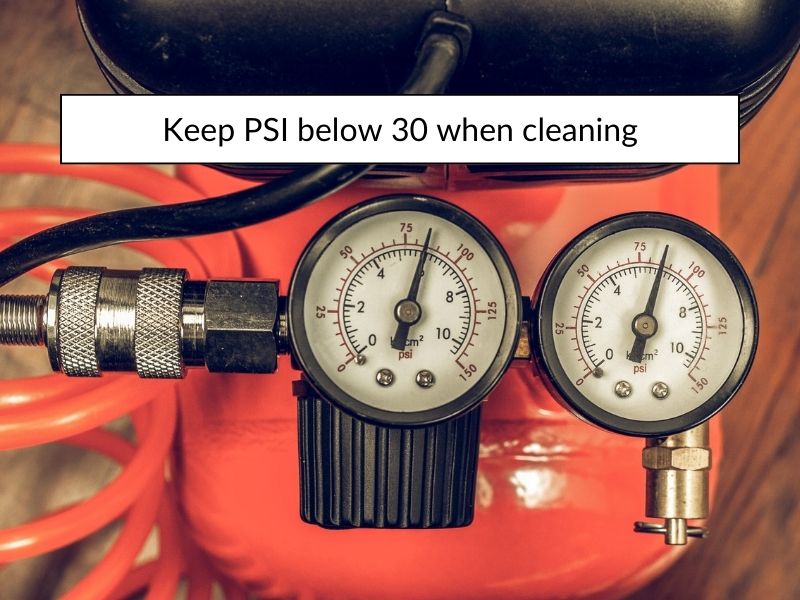
Store your Air Hoses Safely
It’s so important to store your air hoses safely to avoid damage to them. We go into more detail about this in our blog: Air Hose Storage – Keeping Things Tidy and Efficient.
In a nutshell though, keep hoses stored away and out of sunlight. A cracked or broken hose can cause injury or damage to your tools. Always avoid trip hazards by not leaving your air hoses lying around – use air hose reels where possible to increase the safety of your workplace.
Hose and Coupling Safety
When disconnecting hoses unless you have Safety couplings installed you will need to use two hands. One hand to securely hold the hose, the other to operate the coupling. There is a danger of the hose ‘whipping’ away in uncontrolled way if you don’t, which would result in injury to you and others nearby, or indeed damage to your equipment.
If you are using percussive, hammer action types of air tools there is an HSE Requirement to use a ‘Whip’ hose to isolate the coupling from the heavy vibration produced when in use.
It’s never safe to connect or disconnect an air hose when the compressor is on. Make sure the compressor is off and the air has been bled from the compressor by pulling the safety valve ring. A pressurised hose can cause serious injury or damage and so once you have switched your compressor off, there may still be a build-up of pressure in the hose. Again, this can cause your hose to whip away at speed, potentially whipping you in the face or damaging your couplings.
In this scenario, we recommend safety couplings. Safety couplings are designed to release your hose safely by introducing two steps. Step one is to release the build-up of air in the air hose, for instance by using the push button or twisting mechanism depending on the coupling. Therefore, step two is to simply remove the coupling – and with the air build up gone, it’s completely safe.
Here’s a very quick video on how a safety coupling works compared to a standard coupling:
In conclusion, if you follow these air compressor safety tips there is nothing to worry about! If you use an air compressor safely it will open a whole new world of possibilities with the tools you can use and the tasks it can undertake.
If you would like any help or advice about air compressors, or any of the applications. Please don’t hesitate to contact us: 01932 348777 or sales@metrosales.co.uk.




